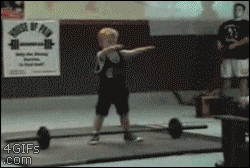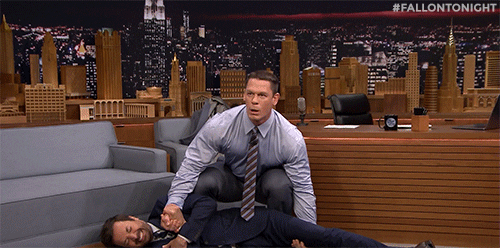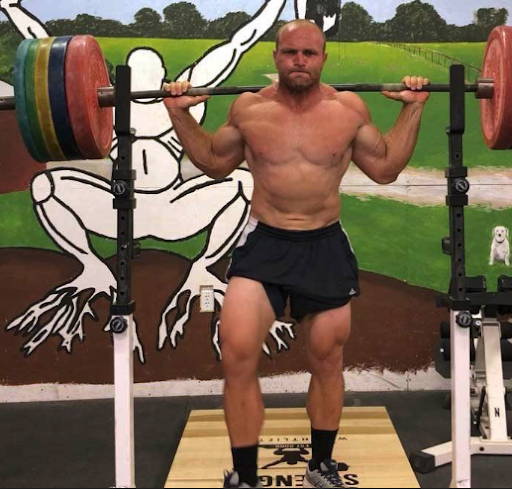Top 5 Exercises To Improve Deadlift
The deadlift is an extremely challenging movement. It is an exercise that if one isn’t prepared, they can hurt their back, blackout, or leave the bar too far forward to even pull it off the ground, let alone to the knee.
All of the different things that go into increasing the deadlift need to be utilized in a manner that allows the gainz to be made from a sustainable perspective. What does this mean? It means if we are trying to push our deadlift, our failure to do the right accessory lifts or supplemental movements, we will not see the deadlift weight increase. In addition, we will also increase the likelihood of injury. Back pain, tight hips, super-super rounded back–not good.
Factoring all of these things in and understanding that the deadlift is the king of the meathead lifts. It makes people thicker, stronger and allows them to gloat like an extreme powerhouse pulling the heaviest of loads.
That takes us into the five key exercises that will help improve the deadlift, specifically the conventional deadlift.
1. Reverse Range Deads
This is something that helps put athletes in the mindset of being able to handle and feel more load, especially for longer-limbed lifters. A lot of people will say just do rack pulls. We think rack pulls are worthless in comparison to reverse range deads.
What does a reverse range deadlift do? Being able to start from the top, the eccentric portion really wakes up the nervous system. For instance, take the barbell out of a squat rack where the bar is set at the proper height, lower the bar, and get a bounce off the floor to try and increase the overload. It is similar to the concept of top-down bands.
Doing reverse range deads two or three blocks out allows us to do more weight than the PR at the time for a triple. See, the reason why a triple can be performed is that we can catch the bounce, and starting from the top made the move easier than starting off the floor.
The reverse range deadlift gets the body ready, helps feel the positions at the top, and the slow eccentric is extremely challenging on the lower back, the hamstrings, and the glutes. The eccentric action also helps improve the technique. Not only does it improve technique with heavier weight, but it also greatly improves strength.
Do this three blocks out and then again a block out from the big PR.
2. Dimmel Deads
We are starting to get a little bit more specific. This is a variation that can be done 16 to 12 weeks out from the big peak. This movement is great for short leg lifters or anyone who struggles pulling from the knee to the hip. Some athletes we will see with a little bit of a hitch, struggling to get their hips through early. The Dimmel dead is great to train this position.

Using the Dimmel deads, it is important to do with extremely high reps. Like sets of 15 to 30 reps. This is great for hitchers, short-legged athletes who struggle with the lockout, or people who struggle to feel the coordination between the glutes, hamstrings, and lower back, right as the lockout is about to occur, utilize the Dimmel deads.
We also recommend coming forward pretty substantially because when the bar passes the knee we want to just sit back with the hips coming through. Think about it like a short stroke with the chest really far forward.
Use this as a really intense supplemental movement. Twice a week, three times a week even, it can be used as a warm-up, a speed exercise, imprint better technique, and a way to really increase hypertrophy in the lower back and hamstrings.
3. Knee Bent Safety Bar Glute Ham
This movement is much more of an accessory, something that can be done 12 weeks out from a big peak to drastically strengthen the posterior chain. The knee bent safety bar glute ham helps long-legged athletes that struggle pulling off the floor. It will also help people with shorter legs. Still, it is a movement we love to hammer long-legged athletes with, mainly because we have noticed that long-legged athletes struggle the first two or three inches off the floor.

The knee bent safety bar on the glute ham will light up the hamstrings. We want to see the back round and arch with the knee bents. The eccentric is a rounded position and the concentric is more of an arch position with the chest opened up. Because the safety bar sits higher, it will light up the hamstrings, lower back, lumbar spine, and it will be felt throughout every erector as they give signals that they are getting stronger.
No safety bar? Use bands hooked up to the glute ham legs, a neck harness, or put a normal bar on the back. Whatever the method, just make sure to have a knee bent position with the round and arch to greatly improve the position right off the floor.
4. Overhead Split Squat (Deficit)
This is another movement where people are probably going, “Really? This?”
We want to be up on bumper plates or boxes so the split squat requires a little bit deeper of a movement. The overhead position is important as well. This is an accessory movement. It is a stability/mobility movement to open up the hips. See, when we do a lot of deadlifting our lower backs might get tight just from the movement.

Doing the overhead split squat on a deficit as a warm-up will help. Use a 5-kilo or 10-kilo plate overhead. Then do the movement later on in the week, pushing the weight a little bit more by using a 20-kilo or 25-kilo plate as an accessory movement. This will give a nice, deep stretch that loosens up the hips which helps the lower back feel better. The movement also wakes up the glutes and posterior chain.
Do the movement as a warm-up regularly but also put the exercise into the program at different points to push the load and increase overall stability. The overhead position does a great job of opening up the thoracic spine, combating the overly internal rotation that develops deadlifting.
5. Pause Back Squat
A lot of coaches, powerlifting coaches, love to use box squats. We think they are great and awesome. However, we think that if we can improve mobility in the lower back and, in turn, improve stability and be more upright when pausing in the hole, it will help with the liftoff period.
Focusing on the pause back squat, sitting in the hole for a slow two seconds, then driving up fast as possible. What we see when driving up is that the chest may come forward a little bit, mimicking the position coming off the floor in the deadlift.

Another key concept with the pause back squat is going ass to grass. Full range of motion is good for improving the deadlift. Now don’t just plop into the hole. Take a nice, slow eccentric muscular action, sit in the hole focusing through the gut and drive through the mid-back. Coming up out of the hole, drive the chest up through the full foot squeezing through the gut as the hips come through rapidly. Feel those positions as they will transfer over to a big deadlift.
Pause back squat helps increase the frequency of training by using it one day to improve the strength of the movement and another day in a dynamic manner. Utilizing the pause back squat before deadlift just to feel positions and wake the body up can help as well, especially in the weeks leading into a peak.
Recap
It is important to understand how to utilize all of these exercises. Periodization of everything accordingly is a must. Making sure the lower back isn’t getting beat up so the body remains able and capable of pulling is necessary to hitting big PRs.
With that being said, utilize the reverse range deads, Dimmel deads, knee bent safety bar glute hams, overhead split squats with a deficit, and the pause back squat to drastically improve the weight being pulled off the floor performing the conventional deadlift.
DANE MILLER
Dane Miller is the owner and founder of Garage Strength Sports Performance. He works with a select handful of clients on building comprehensive programs for fitness and nutrition. Several times a year he leads a workshop for coaches, trainers, and fitness enthusiasts.



